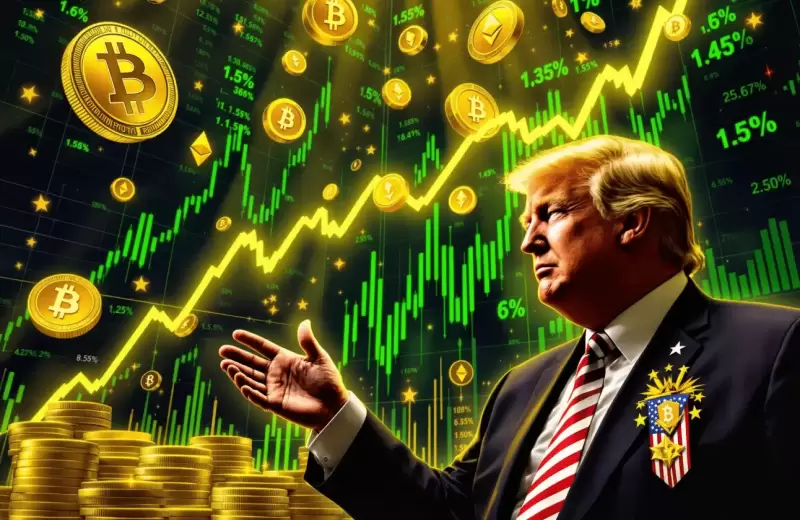 |
|
 |
|
 |
|
 |
|
 |
|
 |
|
 |
|
 |
|
 |
|
 |
|
 |
|
 |
|
 |
|
 |
|
 |
|
傳奇對沖基金經理雷·達利奧(Ray Dalio)發出了明顯的警告:我們正在觀察全球貨幣訂單實時破裂。

Welcome back to the Now Newsletter. I’m Matt Medved.
歡迎回到現在的新聞通訊。我是啞光的。
I’m writing to you live from the TIME100 Summit in New York. The speaker lineup is as eclectic as it is star-studded — from Meghan, Duchess of Sussex, and Ryan Reynolds to Demi Moore and Netflix Co-CEO Ted Sarandos. However, the most interesting talk of the day concerned the future of finance.
我在紐約的Time100峰會上寫信給您。演講者的陣容和星光熠熠的陣容一樣折衷 - 來自梅根,蘇塞克斯公爵夫人,瑞安·雷諾茲(Ryan Reynolds)到黛米·摩爾(Demi Moore)和Netflix Co-Ceo Ted Sarandos。但是,當今最有趣的演講涉及金融的未來。
Legendary hedge fund manager Ray Dalio issued a stark warning: we’re watching the global monetary order break down in real time. Bonds are falling, gold is rising, and faith in traditional currencies is fading fast.
傳奇對沖基金經理雷·達利奧(Ray Dalio)發出了明顯的警告:我們正在觀察全球貨幣訂單實時破裂。債券正在下降,黃金正在上升,對傳統貨幣的信念正在迅速消失。
Circle CEO Jeremy Allaire called it a once-in-a-generation reset — one where digital dollars could become the new financial foundation by creating ongoing demand for U.S. treasury bonds.
Circle首席執行官傑里米·阿萊爾(Jeremy Allaire)稱其為曾經是一代人的重置 - 數字美元可以通過創造對美國財政債券的持續需求來成為新的金融基金會。
And Senator Kirsten Gillibrand? She says Congress still hasn’t woken up, and stablecoin regulation remains the lowest-hanging fruit.
和參議員Kirsten Gillibrand?她說,國會仍然沒有醒來,Stablecoin法規仍然是最低的果實。
It’s worth noting that the panel was preceded by a video explaining Bitcoin, stablecoins, and — believe it or not — NFTs. Welcome to the new world order.
值得注意的是,面板之前是一段視頻,解釋了比特幣,stablecoins,以及 - 信不信由你信不信。歡迎來到新世界秩序。
Which brings us to the latest evolution in onchain experiments: “content coins.” Here are my thoughts on the topic du jour.
這使我們進入了OnChain實驗的最新演變:“內容硬幣”。這是我對du Jour主題的想法。
🪙 Are Content Coins a Thing?
🪙內容硬幣是什麼嗎?
The idea of “content coins” is having a moment.Thanks to Base's recent moves on Zora — minting media into tradeable tokens with a single post — a question is rippling through crypto circles: Are we witnessing a meaningful shift in how we value media, or just another flavor of memecoins masquerading as innovation?To begin, let’s clarify some terms.Memecoins thrive on narrative and virality. They’re tokens with no intrinsic utility, pumped by vibes, communities, and often chaos. Their value comes from attention and speculation, not fundamentals.NFTs, on the other hand, represent unique assets. They’re well-suited for media: visual art, music, essays. They’re non-fungible because each carries context and meaning. Content coins try to bridge these worlds. They’re fungible tokens minted from media — tweets, posters, images. You can buy, sell, or trade them like any other ERC-20. But instead of promising future roadmap value (à la traditional projects), each coin reflects a single moment, and its value lives or dies on what the market makes of it.The difference is intention and execution.There’s a compelling thesis behind the movement. As Base's Jesse Pollak argues, the internet has long failed to value content properly. Likes don't pay the rent. Paywalls gate creativity. Algorithms extract value rather than reward it.In this light, content coins offer a radical alternative: an internet where media is free to access, but ownable, tradable — even investable. They propose a market-native way to reward creators and rewire value flows in the attention economy. Speculation becomes a discovery engine. Culture becomes currency.This is the ideal.But crypto doesn’t operate on ideals. It operates on reflexes.When Base minted two content coins within an hour — both via Zora — the first surged to a $13M market cap, only to crater by 90% after the second launched. No context. No communication. Just confusion. What was framed as infrastructure felt indistinguishable from a memecoin drop — and carried the same risks.Crypto markets don't reward nuance. They reward focus. Which is why memecoins work best when there's only one. The entire community rallies behind a single narrative, concentrating liquidity and attention around a unified idea — think $DOGE, $PEPE, $MOG. Launching more than one fractures both the meme and the market.That's what happened to Base's first token. And to $TRUMP when $MELANIA launched. The meme got cannibalized. And people lost money.Pollak's vision rejects that model. He believes every piece of content can, and should, be its own coin. Post, mint, move on. No roadmaps, no Telegram groups, no cult of personality. Just an open protocol for coining culture.In theory, this could normalize onchain creation. But in practice, it collides with crypto's most scarce resources: attention and liquidity.When every post becomes a coin, each one competes not just with other creators, but with your last one. You fragment your narrative. You dilute liquidity. You flatten meaning into momentary price action.Crypto doesn't scale well with infinite inputs. It needs:handles to rally around (e.g., memes, personas) to siphon attention and liquidity into a single point of focus. Otherwise, the experiment quickly becomes noise. Especially when its biggest proponent is visibly struggling to maintain clear communication, coherent messaging, and a consistent tone of voice throughout. As I argued in our recent op-ed, not every piece of
The idea of “content coins” is having a moment.Thanks to Base's recent moves on Zora — minting media into tradeable tokens with a single post — a question is rippling through crypto circles: Are we witnessing a meaningful shift in how we value media, or just another flavor of memecoins masquerading as innovation?To begin, let's clarify some terms.Memecoins thrive on narrative and virality.它們是沒有固有效用的令牌,被共鳴,社區和經常混亂所吸引。它們的價值來自關注和猜測,而不是基本原理。它們非常適合媒體:視覺藝術,音樂,論文。它們是不可殺菌的,因為每個都具有上下文和意義。內容硬幣試圖彌合這些世界。它們是從媒體上鑄造出的可替代令牌 - 推文,海報,圖像。您可以像其他任何ERC-20一樣購買,出售或交易它們。但是,每個硬幣都沒有承諾未來的路線圖價值(傳統項目),而是反映了一個時刻,其價值或對市場所產生的價值而死。差異是意圖和執行。運動背後是一個引人注目的論文。正如Base的Jesse Pollak所說,互聯網長期以來一直無法正確重視內容。喜歡不付房租。付費沃爾斯門的創造力。算法提取價值而不是獎勵它。在此光線中,內容硬幣提供了一種根本替代方案:互聯網可以自由訪問,但可以擁有,可交易 - 甚至可以投資。他們提出了一種獎勵創作者並在註意力經濟中重新劃分價值流動的方式。猜測成為發現引擎。文化成為貨幣。這是理想的。但是加密貨幣不以理想為基礎。它以反射運作。當基地在一個小時內鑄造了兩枚內容硬幣時,兩者均通過Zora,第一次飆升至1300萬美元的市值,僅在第二次推出後的火山口下降了90%。沒有上下文。沒有溝通。只是困惑。框架的基礎設施與成人跌落無法區分 - 並承擔了同樣的風險。他們獎勵重點。這就是為什麼只有一個時,Memecoins效果最好的原因。整個社區在單個敘事背後集會,圍繞一個統一的想法集中流動性和關注 - 想想$ doge,$ pepe,$ mog。發起了一個以上的模因和市場骨折。這是Base第一個令牌發生的事情。梅拉尼亞(Melania)推出$ trump。模因被蠶食了。人們損失了錢。他認為,每個內容都可以並且應該是自己的硬幣。帖子,薄荷,繼續前進。沒有路線圖,沒有電報團體,沒有人格崇拜。只是一種開放的培養培養方案。從理論上講,這可以使OnChain的創建正常化。但是實際上,它與加密貨幣最稀缺的資源相撞:注意力和流動性。當每個帖子變成硬幣時,每個帖子不僅與其他創作者競爭,而且與您的最後一個競爭。你的敘述使你碎裂。您稀釋流動性。您將含義弄平了瞬時的價格動作。 Crypto隨著無限輸入的規模不佳。它需要:處理要圍繞(例如,模因,角色)集結,將注意力和流動性屈服於一個關注點。否則,實驗很快就會變成噪音。尤其是當它最大的支持者明顯地努力保持清晰的溝通,連貫的消息傳遞以及一致的語調。正如我在我們最近的專欄中所說的那樣,並非每一個
免責聲明:info@kdj.com
所提供的資訊並非交易建議。 kDJ.com對任何基於本文提供的資訊進行的投資不承擔任何責任。加密貨幣波動性較大,建議您充分研究後謹慎投資!
如果您認為本網站使用的內容侵犯了您的版權,請立即聯絡我們(info@kdj.com),我們將及時刪除。
-

-

- 令牌公司(TSE:1766)即將進行外部交易
- 2025-04-24 11:50:12
- 希望購買代幣公司(TSE:1766)的股息股息將需要盡快採取行動,因為該股票即將進行交易。
-

- Zksync從其黑客中恢復了500萬美元
- 2025-04-24 11:45:13
- ZK Nation宣布,其黑客合作並退還了在指定時間範圍內從Zksync偷來的500萬美元。
-

-

-

-

- 特朗普向他的$特朗普模因硬幣的持有者提供晚餐
- 2025-04-24 11:35:13
- 在Crypto Hype和政治劇院的最新碰撞中,唐納德·特朗普總統從字面上提供了權力。
-

-

- 以太坊(ETH)顯示出強烈的恢復跡象,包括顯著的向上移動
- 2025-04-24 11:30:12
- 經過數週的柔和活動,ETH已上漲了$ 1800的馬克和50天的指數移動平均線(EMA),這是至關重要的



























































